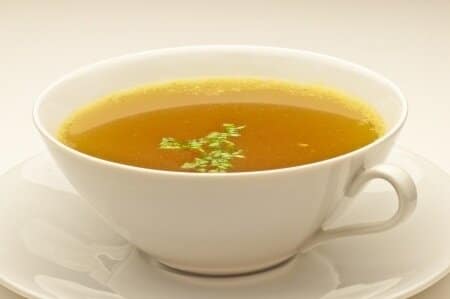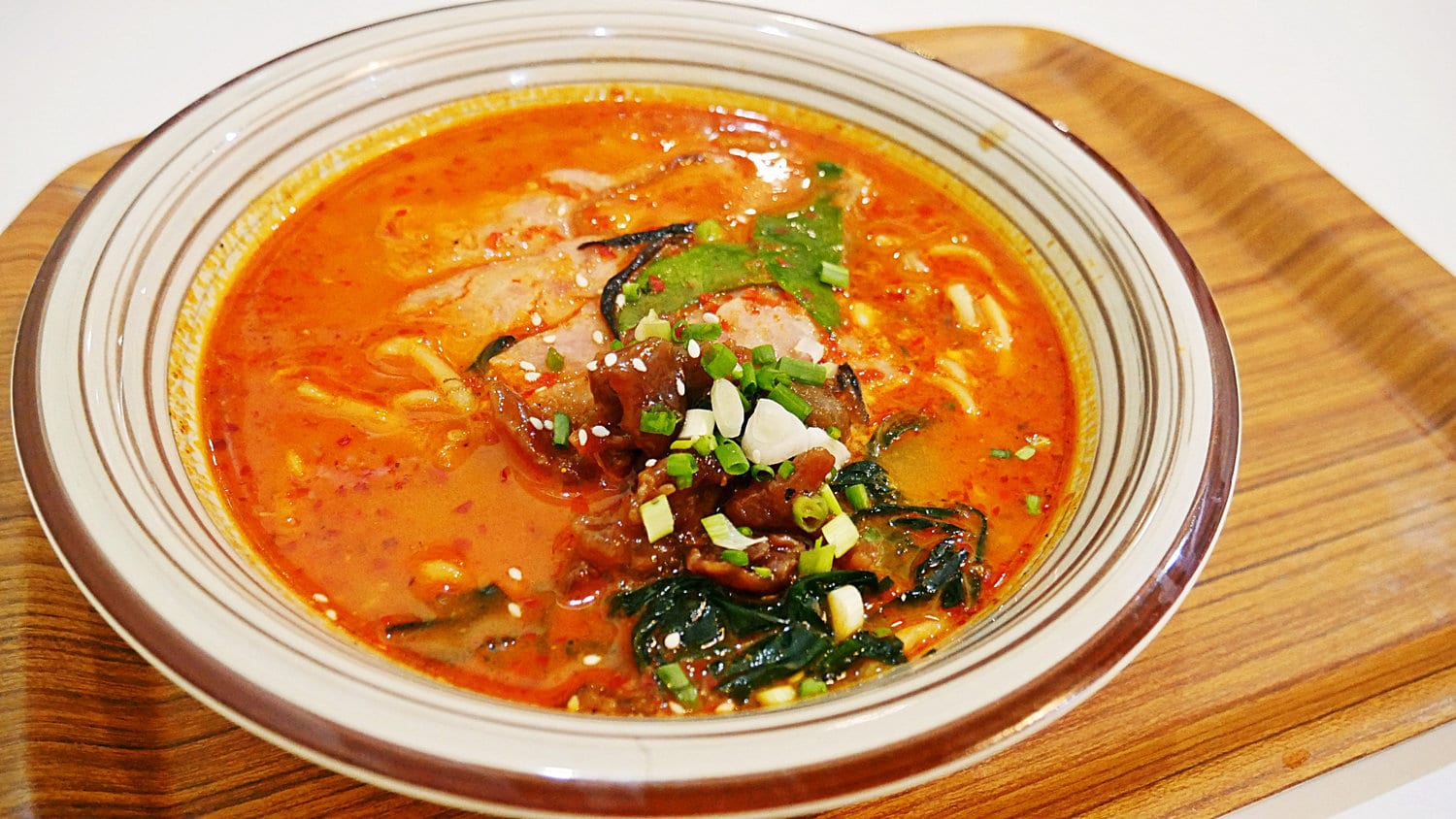Making bone broth is actually very easy and takes just a bit of time.
It is ideal for those on a budget who are looking to boost their health and their immune function in an economical and delicious way. Bone broth is based on the innocent idea of “waste not, want not” but it also happens to effortlessly enhance the taste of your food and to provide you with so many vital minerals, vitamins, and other healing factors such as gelatin.
I drink bone broth every day. The benefits from bone broth are so compelling, I see it as a necessary element to any nutrient-dense diet (except for the people that do not tolerate it, usually due to histamine issues). And it never fails to invigorate and nourish me.

I highly recommend making your own bone broth. It will save you a LOT of money!!
If you cannot do this then I recommend Kettle and Fire. At this point they are the only company I trust to provide clean, high-quality bone broth.
How To Make Perfect Bone Broth
Ingredients
- 4 quarts cold filtered water
- 2 tablespoons apple cider vinegar
- 1 whole pasture-raised chicken OR 2-3 pounds of chicken thighs or breasts (baked and meat removed and used elsewhere) OR 2 to 3 pounds of bony chicken parts, such as necks or backs
- 1-2 large knuckle beef bones
- 2-3 marrow beef bones (optional)
- 2-4 chicken feet (optional)
- 1 large onion, chopped in half, retain skins
- 1 whole bulb of garlic
- 2 carrots
- 3 celery stalks
- 1 large piece of kombu (seaweed)
- 1 bunch parsley
- several sprigs of thyme
Instructions
If you are using a whole chicken or thighs or breasts, bake the chicken like you normally would, eat the meat and just use the bones for the broth. If you have chicken necks, backs, or feet then no need to cook first. Some people like to brown the beef bones if they have some meat on them. But I find it easier to just throw all the bones in the pot.
Fill a 4 quart pot or slow-cooker with filtered water and add the vinegar. Place all the bones into the water and allow them to soak for about an hour. Make sure the bones are covered with water but also make sure there is a good amount of bones for the amount of water. (as per the ingredient list)
Then turn on the heat, cover the pot and allow to cook gently for 24-48 hours. Do not let the water boil, just keep it at a gentle, gentle simmer, so gentle you should not even see bubbles. The first time you do this, check the flame and level of simmer multiple times so you don’t accidentally let it come to a boil. Skim any scum from the top of the broth as it cooks.
One hour before you are about to strain the stock, add the vegetables. No need to peel or wash (unless there is visible dirt on the food), just throw it all in, including the onion skins (they add beautiful color). Allow the broth to cook for another hour.
Set up a large and sturdy glass jar (1 quart to 1/2 gallon) in a large bowl filled with ice water in the sink. Place a metal strainer in a metal funnel and place them both in the opening of the glass jar. Bring the pot next to the sink, using potholders (it will be very hot and heavy!). Using a ladle, remove the juices from the pot into the strainer.
If you have a dog, set up a bowl nearby to remove pieces of meat and carrots (not onions!). Let it cool before giving to your dog. Your dog will most likely LOVE the meat and the broth, I don’t recommend giving the bones but that’s up to you.
It takes a while to use the ladle and you may be tempted to just pick up the pot and pour the liquid into the strainer. This CAN work but be very careful….I tend to lose a lot of broth whenever I do this, as it spills everywhere and when large bones come sliding out they splash.
As the pot gets more empty and you remove the large bones, then you can safely pour the liquid out of the pot into the strainer.
As soon as you are done straining, immediately cap the jar and place in the fridge. Broth will gel better when it is cooled very quickly. If your broth does not gel well, that’s okay. You are still getting tons of minerals, gelatin, and collagen.
PS: You can make fish stock in a similar way. Ideally use fish heads and carcasses. You can use fish such as sole, turbot, cod, rockfish, and snapper (although keep in mind that rockfish and snapper are pretty heavily contaminated fish). Fish stock smells pretty awful while cooking, fyi. Bonito flakes and shrimp shells also make a great stock and can be cooked up pretty quickly.
Benefits of Bone Broth
- The collagen/gelatin in bone broth is super nourishing for your bone, skin, hair, and nails
- Contains minerals of bone, marrow, cartilage; in particular, calcium, phosphorus, magnesium, potassium, sulfate, flouride, and sodium. Gelatin aids in digestion, tones the blood, increases serum calcium levels, improves absorption and utilization of calcium and improves bone mineral density.
- Contains hydrophilic colloids (in gelatin): When colloids are heated they usually become hydrophobic, meaning they repel liquids making food harder to digest. However, the gelatin in stock is actually hydrophilic (it attracts water) even after it has been heated. This makes stock rich in gelatin a wonderfully effective digestive aid as it heals and coats the gastrointestinal lining.
- Cartilage improves elasticity, and has been shown to be beneficial for improving joint disease, rheumatoid arthritis and inflammatory bowel disease. Cartilage has also been shown to help fight against cancer and is very effective in boosting immune system function and nourishing the gut lining.
- Collagen contains a high concentration of amino acids (mostly glycine, proline and lysine)
- Glycine: very important during pregnancy as the growing fetus demands 2-10 more times glycine than normal, helps in the creation of creatine (energy buffer and shuttles energy across muscle tissue, in particular the heart), and has been shown to be very effective in helping to cleanse the liver (classified as a liver tonic). Glycine also has been shown to help heal leaky gut, which is important for anyone with autoimmune disease.
- Proline: has been shown to have beneficial effects for memory and the prevention of depression.

Uses of Bone Broth
- Use as a base for soup, stew, curry, chili
- Add to any cooked dishes for extra nutrition (even veggie dishes)
- Make a reduction sauce or gravy from broth
- Sip straight with some sea salt and black pepper
Notes
1. If you don’t have time to make a full broth you can always make a quick and flavorful broth by boiling shrimp shells or bonito flakes for a half hour or so. You can also add some kombu after you remove the shells or flakes and then lightly simmer (do not boil!) for 10 minutes. This is the quick stock that forms the base of all miso soup in the homes of Japanese people.
Avoid commercial broths that contain “hydrolyzed proteins”, which is yet another tricky name for MSG.
2. Skim the broth as you go. This will make sure you get all of the impurites out. After your broth cools, you will see a thick layer of fat formed on the top. When you use the broth, remove the fat and use for cooking or discard.
3. Make sure you don’t raise the temperature too high. You want the stock to simmer and not boil.
4. It is very important to cool the stock immediately. I always use ice water to cool the broth as I strain. I then put the jars in the coldest part of my fridge until I use them. This will lead to gelatinous broth every time!
5. You may be wondering where you would get knuckle bones and chicken feet! The best place to start looking is at your local farmers’ market. If you have a butcher nearby they should have all that but be sure to only use grass-fed beef and pasture-raised chicken. Conventional meat should be avoided at all costs.
6. Bone broth is a medicine and a food. Just like a tea, broth is made by removing active chemical ingredients into the water by means of heat, time and acid, making the nutrients immediately available to absorb. Good stuff!
7. Bone broth will be good, if stored in the fridge, for up to 2 weeks. You might get more time out of it if you keep the layer of fat on top. You can freeze bone broth as well. Just be sure to do so after fully cooling and ideally in glass containers.
Disclosure: When you click on a link to a product I recommend from this site I do make a small commission from those sales. This does not change the cost to you, but it does help support this site. My goal in recommending these products is to make life better or easier for you, therefore the commission does not ever change my opinion of the product.
